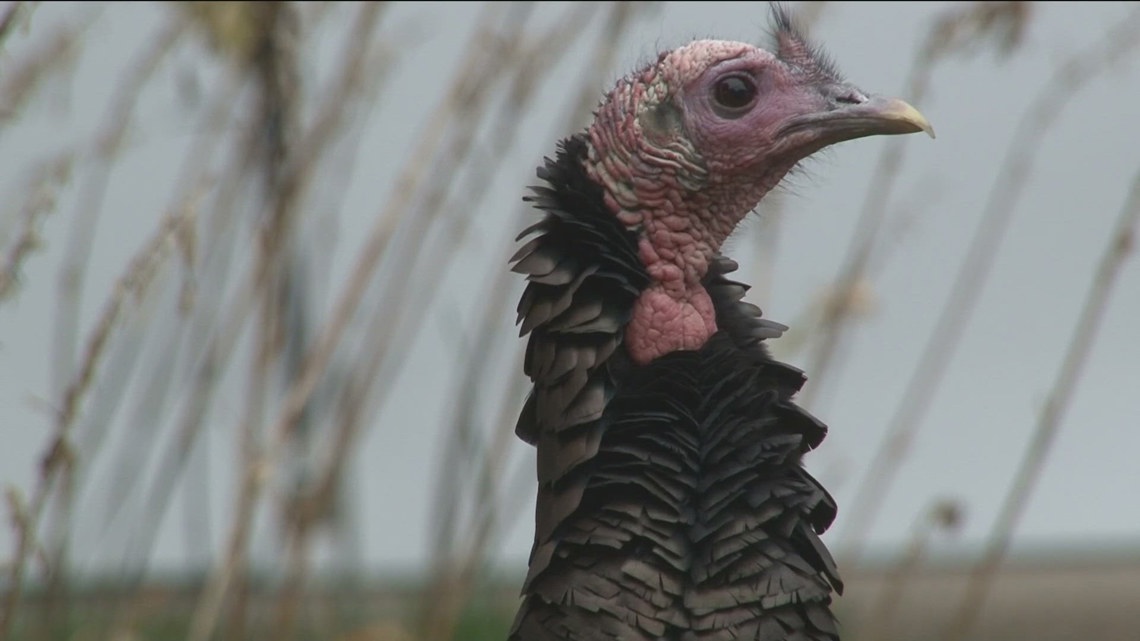Experts said wild turkeys get used to their environment, so people and cars don’t bother them after a while.
MINNEAPOLIS — Wild turkeys at the University of Minnesota have thousands of followers, literally.
The Instagram account, turkeysofumn, has more than 6,000 followers. They have a form where people can submit videos of the turkeys and then it gets posted.
“The turkeys seem very confident they can take us,” said Paige Robinson.
Robinson started the account in 2020, after seeing the University of Wisconsin – Madison had a turkey Instagram account. She graduated in 2024 but still runs the page.
“I can’t give it up, I love it so much,” Robinson said.
Robinson said the U of M turkeys like to hang out around Superblock, which is made up of four freshman dorms. She said nothing seems to scare them except for one thing.
“I will say someone today sent me a video of one of the food delivery robots on the sidewalk scaring the hell out of the turkeys, so new thing for them to adapt to I guess,” Robinson said.
The turkeys have adapted to Minnesota better than you might think. They were reintroduced to the state in the 1970s and have travelled far.
“At this point they’ve been seen in every county in the state, so they’ve moved all across the state in that time,” said Roy Churchwell, resident game bird consultant at the Minnesota Department of Natural Resources.
It might be surprising the wild turkeys like to hang out in urban areas, but Churchwell said they go where there’s food.
“They do get used to their surroundings, so the turkeys that live on campus are used to people walking by and after a while they just get to a point where it doesn’t bother them,” Churchwell said.
Robert Blair, a professor in fisheries, wildlife, and conservation biology at the University of Minnesota, said seeing turkeys used to be quite the sight.
“For a long, long time it was very like ‘oh, I saw a turkey’… and now I’ve got them nesting on my woodpile in my backyard,” he said.
Blair said no one has really studied why they seem to have no fear. He said there’s been little research on why birds move into urban areas, but researchers think size might be a factor. He said big birds manage well in the cities.
“I mean they just parade around,” Blair said. “I think they’re testing out what they can do actually.”
He said there aren’t a lot of predators that would hunt them in the city.
“They’re not susceptible to being eaten or killed in urban areas, and so we’re getting lots of them,” he said.
For the most part, wild turkeys and humans live in harmony, but every now and again one can get aggressive.
“I had friend that one time she came back from a business final, and a turkey chased her all the way back to the dorm,” said Tuba, a U of M student. “They’ve been peaceful with me. They haven’t chased me around yet.”
Her friend Eesha said “I have never had such an encounter. They have been very peaceful every time I come across them.”
Churchwell said it’s best to act aggressively if a turkey is being aggressive toward you.
“The best [thing] is for everyone to be aggressive toward turkeys and not let them intimidate [you],” Churchwell said.
He said you can also chase them off with a broom or, in the summer, use a water hose.
Churchwell said it’s important for people not to feed them as well, so they can stay wild animals. He said if you notice turkeys have been hanging around your bird feeder, it’s best to take it down for a couple of weeks.

